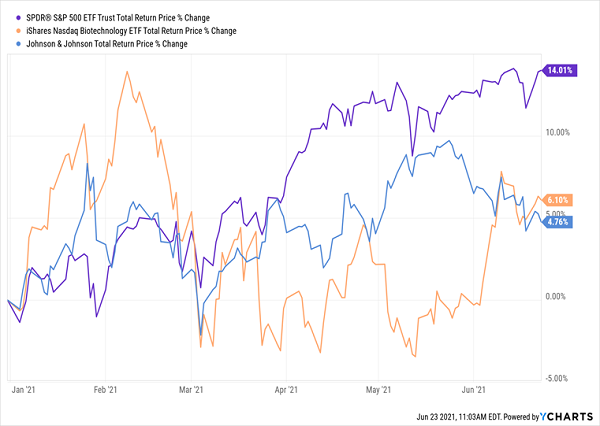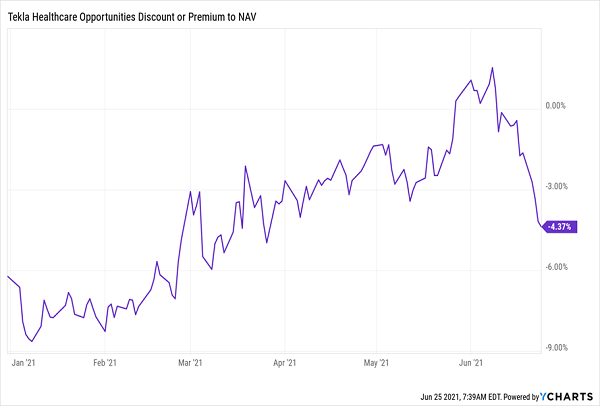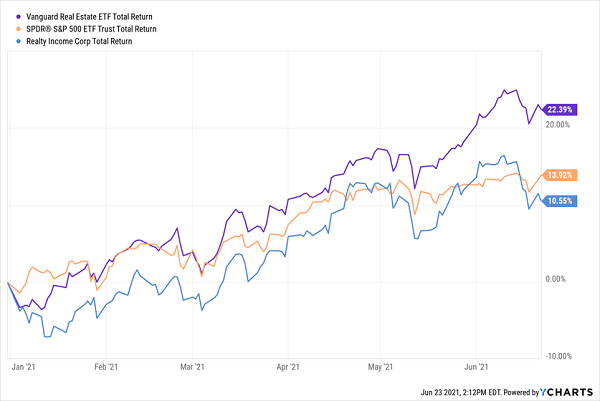When it comes right down to it, we dividend investors really only need three things:
- Bargain stocks with …
- High current yields and ideally …
- Monthly payouts—so we can line up our income with our bills and reinvest our dividend cash without having to wait for three long months.
I know—this list is cute, but it sounds wildly out of step with the times.
After all, the COVID rally has sliced the typical S&P 500 stock’s yield to an unlivable 1.4%. And bargain valuations? Ha! Stocks trade at a helium-powered 37-times their last 12 months of earnings right now.
And we all know that to get monthly payouts, we must look beyond the popular stocks to lesser-known plays, like real estate investment trusts (REITs) and closed-end funds (CEFs).
Cashing In On Lazy First-Level Thinking
Let’s stop here for a second, because it’s vital that we don’t make the mistake of associating “lesser known” with “low quality.” Too many folks think that way—and it’s why many are forced to scrape by with yields that are being lapped by inflation.
Truth is, REITs and CEFs are among the best places to get high, safe dividends, and bargains, too. Every income investor should own one or both asset classes. This realization alone puts us one step ahead of the rest of the crowd.
Consider CEFs, which yield around 7% on average today. And of the 500 or so CEFs out there, 329 trade at discounts to net asset value (NAV, or the value of their portfolios). What’s more, 358 pay dividends monthly!
REITs, too, are known for their above-average dividends. And while the sector isn’t as flush with monthly payers as CEFs, there are some standouts, like 4.2%-yielding mall landlord Realty Income (NYSE:O)—more on that one below—warehouse REIT STAG Industrial (NYSE:STAG) and senior-care facility manager LTC Properties (NYSE:LTC).
So how do we find the best deals among monthly payers? Let’s take a spin through various sectors of the economy and rank them in order of appeal. We’ll also cover some specific monthly paying stocks and funds to consider within each area.
1. Bargain Monthly Dividend Play No. 3: Healthcare CEFs
Pharma stocks might not jump out as bargains, given that they seem to be all we read about these days, but they’ve actually trailed the market this year.
Consider the pharma benchmark iShares NASDAQ Biotechnology ETF (NASDAQ:IBB), in orange below, and the biggest pharma firm of them all, Johnson & Johnson (NYSE:JNJ), in blue. Both are well behind the SPDR® S&P 500 (NYSE:SPY), in purple:
Pharma Lags, Our Opportunity Arrives

Our monthly payout play here is a CEF called the Tekla Healthcare Opportunities Fund (NYSE:THQ), which holds J&J and other big-name drug and medical-device makers, such as Abbott Laboratories (NYSE:ABT), Bristol-Myers Squibb (NYSE:BMY), AbbVie (NYSE:ABBV) and Thermo Fisher Scientific (NYSE:TMO).
The fund yields 5.9%, far more than any of its individual holdings. And its payout has hummed along, rolling in every month since THQ’s launch in 2014:
THQ’s Steady Monthly “Paychecks” Roll In

Source: CEF Connect
Then there’s discount: THQ trades at a 4.4% discount to NAV, which is decent enough on its own. But consider that this one traded at a 1.6% premium as recently as June 8. That makes this latest drop in its premium a nice opportunity to buy.
THQ Goes on Sale

What kind of upside can you expect? A 1.6% premium would boost the fund’s price by 6%, and that’s before any jump in its portfolio value (a certainty, in my view, given how undervalued these stocks are). The discount gives us a nice head start on our gains, and pairs up nicely with THQ’s 5.9% dividend.
2. Bargain Monthly Dividend Play No. 2: Mall REITs
REITs have soared this year, recently topping the S&P 500. But one corner of the REIT market is still cheap: mall landlords.
Check out how Realty Income (NYSE:O), one of the biggest REITs out there, has lagged the S&P 500 (in orange) and the Vanguard Real Estate ETF (NYSE:VNQ), in purple:
REITs Revive, But Mall Owners Lag

You might be surprised to hear me talking up mall REITs; after all, I’ve spent the last few years going on about how they’re getting crushed by Amazon.com (NASDAQ:AMZN) and its ilk.
My view hasn’t changed. That’s why I only recommend holding retail REITs for the short term—over the next six to 12 months, say—as the reopening hits its stride.
And Realty Income, which yields 4.2% today, should be high on your list for a few reasons. Chief among them is the fact that it rents standalone buildings to tenants who take on the taxes, maintenance and insurance costs themselves. It’s a savvy model that frees up the REIT from cost and risk.
That, plus the wide range of retailers it rents to, has helped Realty Income bounce back from the pandemic. Rent collections were up to 94%, as of the end of the first quarter. Management also expects adjusted per-share funds from operations (FFO, the main REIT cash flow metric) to return to growth this year, up 1.5% to 2.9% from 2020.
Despite that, Realty Income trades 18% below pre-pandemic highs. That’s too low for a REIT renowned for growing its dividend every quarter and paying a 4.2% dividend that’s well supported by FFO: the current annualized monthly dividend comes in at a conservative (for a REIT) 82% of the midpoint of this year’s forecast adjusted FFO.
3. Bargain Monthly Dividend Play No. 1: Energy CEFs
That brings us to our third sector, energy, which is in the midst of another highly predictable “crash ‘n‘ rally” pattern. The crash is quick, while the ensuing rally lasts for years. Here’s how it played out in 2008 and 2020:
- Demand for oil evaporates and its price crashes (2008 and 2020).
- Energy producers scramble to cut costs, so they cut production aggressively.
- The economy slowly recovers (2009 and late 2020), energy demand picks up, but supply lags.
- And lags. And lags. And the price of oil rallies until supply eventually meets demand (2009 to 2014 and 2020 to present).
According to the International Energy Agency (IEA), world oil demand is projected to hit 96.7 million barrels per day this year. Meanwhile, supply is just 93.6 million barrels. Oil prices will likely keep climbing until that imbalance is resolved.
A tempting play here is a CEF called the First Trust MLP & Income Closed Fund (NYSE:FEI), which yields 7.6% and trades at an 8.1% discount to NAV.
The fund holds master limited partnerships (MLPs), which tend to pay above-average yields and operate pipelines and oil and gas storage facilities.
As a CEF, FEI gets to use leverage. It borrows for next to nothing and buys more MLPs, for a portfolio that is “115% long.” This juices returns in a rising market.
Leverage, of course, is a double-edged sword and can also magnify losses in a downturn, so you do need to be careful. But FEI’s 15% leverage is modest, and its 8.3% discount helps hedge its downside.
One more thing: if you’ve bought MLPs before, you know they come with a complicated tax form called a K-1. But when you buy them through a CEF, you (or your accountant) get to skip this hassle. At tax time, you’ll get a simple Form 1099.
Painful memories of March 2020 are probably the reason FEI and other energy CEFs are trading at big discounts today. These vivid recollections create opportunity—and FEI has been caught in the downdraft, giving us a shot at its high monthly dividend at a bargain.
Disclosure: Brett Owens and Michael Foster are contrarian income investors who look for undervalued stocks/funds across the U.S. markets. Click here to learn how to profit from their strategies in the latest report, "7 Great Dividend Growth Stocks for a Secure Retirement."
